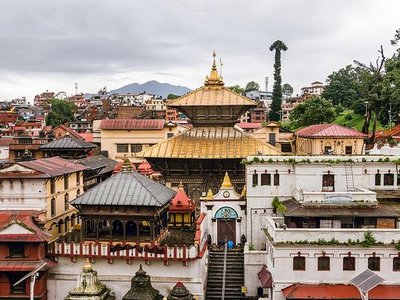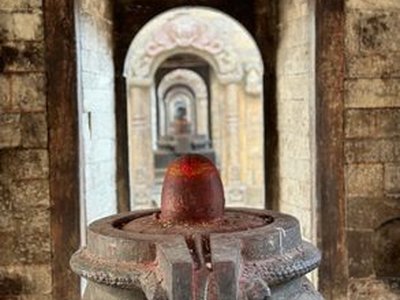The Pashupatinath Temple


The Pashupatinath temple complex is
part of UNESCO’s World Heritage Site. The temple’s age is not exactly certain, but legend indicates its existence to date back to 400 BC.
The complex includes 518 temples, buildings, and structures. The main temple is designed as a pagoda structure, located within the fortified courtyard, and guarded by Nepalese military force and semi-military Nepali police. Features of the main pagoda include carved wooden rafters, cubic sculptures, with two-level roofs covered with copper and gold sheets. Four main doors to the pagoda are covered with silver sheets, while the pinnacle is gold.
The temple has two interior rooms where the Pashupatinath (AKA Shiva) idol is placed. Near the temple’s western door stands a bronze statue of Nandi bull, the sacred vehicle or vahana of Shiva. Temples in the complex are designed in Vaishnav (Vishnu) and Shaiva (Shiva) tradition. The main idol is a stone deity with four faces representing Shiva’s various aspects, Sadyojata (or Barun), Vamadeva (or Ardhanareshwara), Tatpurusha, Aghora & Ishana (imaginative). Facing the four directions as well as zenith, they represent the five primary elements (earth, water, air, light, and ether).
Unlike other Shiva lingams in India and Nepal, this Pashupati Shiva idol is always in its golden cover except during prayer. Pouring milk and water from the Ganges river (ganga jal) which are standard acts of Hindu ritualistic worship is possible only during the abhisheka prayer times and conducted only by the main priests. The Pashupatinath idol can be touched only by the main Bhatt priests while the Bhandari priests assist the Bhatt priests during daily pooja worship rituals.